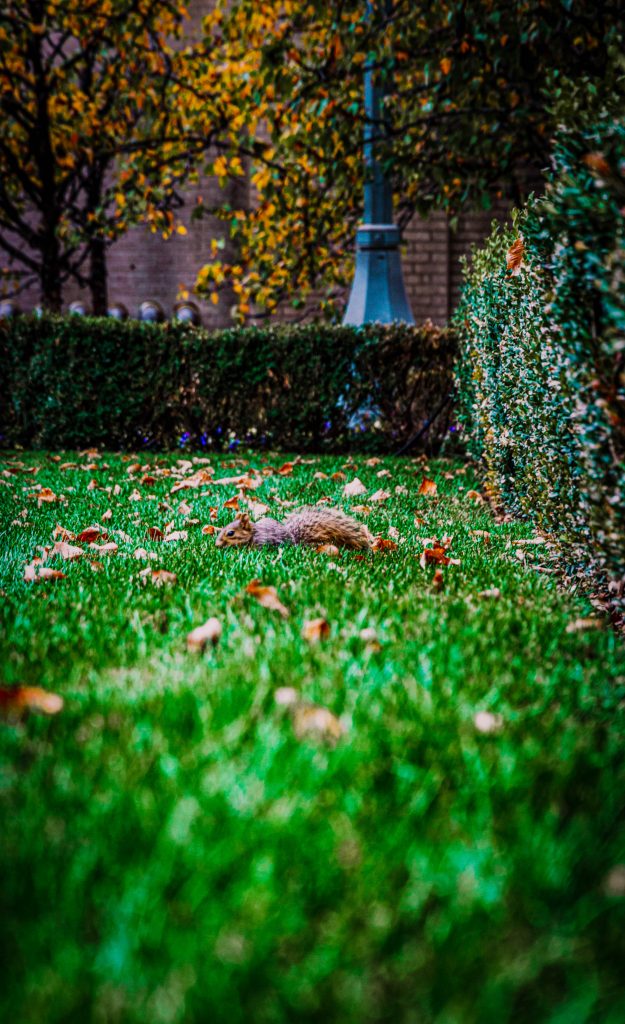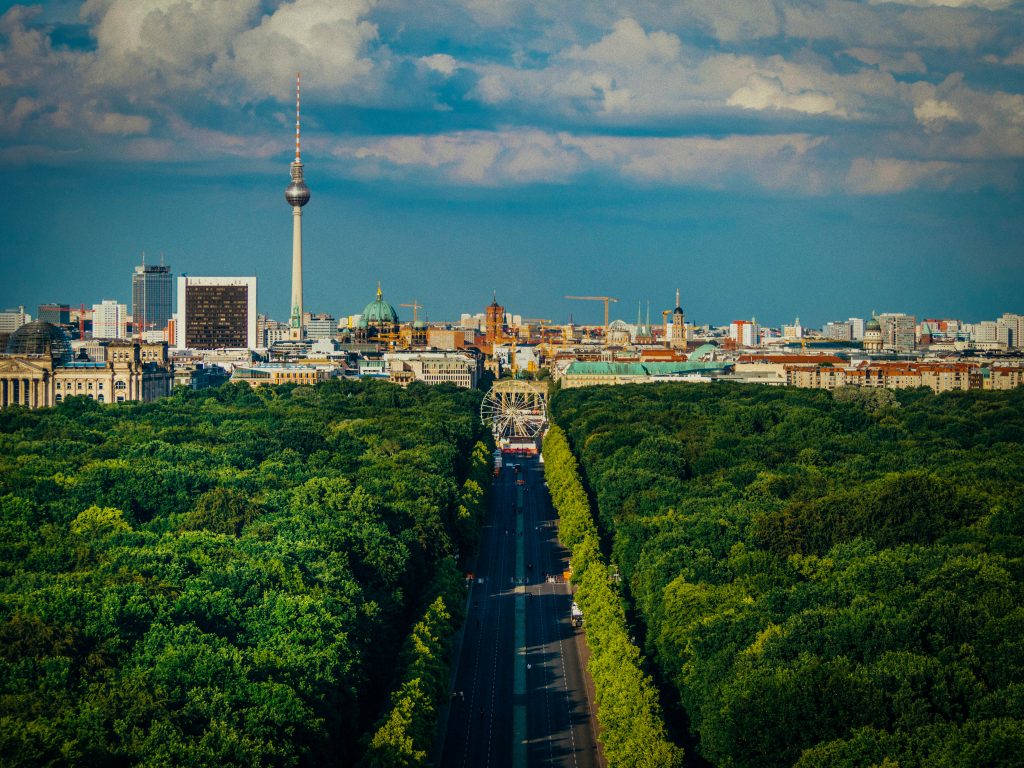It’s easy to forget we share our space in the city with other creatures. Either being small and almost invisible to the unobservant eye or being right there, planted in front of your front door – their importance is far more significant than they’re given credit for. The European Director of the World Green Building Council shed some light on the connection between biodiversity and the importance of policies to sustain it.
Biodiversity enables food, clean water, medicine, and shelter for all creatures, including human beings. Without it, the whole ecosystem would collapse. Urban biodiversity refers to the variety of living organisms and their habitats in a dense human environment.
How can we protect urban biodiversity in European cities? Stephen Richardson, Director of the World Green Building Council, reflected with us on the role and importance not only of biodiversity itself but of establishing policies to make sure that urban biodiversity is protected.
The World Green Building Council (WorldGBC) is a global network of national councils working towards sustainability in the built environment. Green building councils are widely known for running voluntary green building certification schemes, and they also work on communication, awareness-raising and advocacy within their markets, education and training, and increasingly, they are working on the sustainable finance agenda.
In 2020, WorldGBC launched a global Health and Wellbeing Framework consisting of six key principles to benefit human health, biodiversity and the planet. By 2050, it is expected that 68% of the developed world will be urbanised. With advancing urbanisation, the human species is becoming increasingly distanced from nature. Principle three of the Framework emphasises the health benefits of enhancing biodiversity both in and outdoors in urban developments. Access to nature can offer biophilic health benefits to occupants, reducing stress and protecting mental health.
WorldGBC has been accepted into the EU’s Platform on Sustainable Finance, where they have been looking, amongst other things, at how the EU’S taxonomy can incentivise or support biodiversity in the built environment.
EU Taxonomy
You may be wondering, “what exactly is the EU Taxonomy?”. Simply put, it’s a classification system for economic activities to be able to claim that they make a contribution to environmental objectives that are set out in the taxonomy regulations. The aim is to provide companies, investors and policymakers with appropriate definitions for which activities are environmentally sustainable, in order to protect private investors from greenwashing, while helping companies become more climate-friendly and redirect the investments to the areas where they are needed most.
The EU taxonomy is especially important, as it represents a common language about what is ‘sustainable’. This is to support the industry in ensuring that both the EU’s climate and energy targets for 2030 and the objectives of the European green deal are met.
The taxonomy is about setting a clear framework of aims and criteria for six different environmental objectives:
- Climate change mitigation
- Climate change adaptation
- The sustainable use and protection of water and marine resources
- The transition to a circular economy
- Pollution prevention and control
- The protection and restoration of biodiversity and ecosystems
The taxonomy provides an important opportunity to strengthen efforts to improve biodiversity in cities. “At the moment, the policy framework for buildings says very little about biodiversity,” Stephen points out. Biodiversity comes up in local planning policy and guidelines, but it doesn’t feature at all in the EU buildings policy. “The policy framework for biodiversity is disconnected from the performance of the asset,” says Stephen, “so what is needed is to put in place clear standards for biodiversity at that asset level.” The demand for green investments is on the rise, making it a great opportunity to motivate developers, clients, and construction companies to consider biodiversity and to give them a clear framework of criteria that the industry can align around and work with.
Whilst developing such criteria, WorldGBC has been looking at what evidence is already out there, what best practices are already on the market, and how the built environment can make a substantial contribution to biodiversity. “The taxonomy is not going as far as putting in legislation for biodiversity, but we are creating a really clear framework that will incentivise it,” explains Stephen, and because many large companies are “required to report the alignment of their turnover against it”, it is an important first step in the right direction. “And a lot of the companies’ investors, their stakeholders, will be pushing them to increase their alignment,” he adds.
The Superpowers of Biodiversity
“It’s not an overstatement to say that we, our entire existence, relies on the existence of other species. And so, biodiversity is critical for maintaining our food supplies, it’s critical for maintaining the stability of the natural world around us that sustains us.”
Biodiversity has a huge number of benefits, in terms of the liveability of cities and the quality of life for city dwellers:

- Reducing stress levels by having access to nature and seeing natural colours
- Improved recovery rates of patients in hospitals
- Enabling of the food chains
- Lowering the city’s temperatures and mitigating the urban heat island effect
- Improving the air quality
But how can we measure biodiversity? In simple terms, it is determined by counting the number of species residing in a given area. The bigger the species diversity, the bigger the biodiversity. Of course, there is a bit more to it and factors like promoting native and preventing invasive species are important, too.
When it comes to the size of green spaces to support biodiversity, there is no clear answer, as quality beats quantity. However, according to BioScience, some studies state that adding just 150 m2 of green space can increase creature richness, specifically bird species.
“Nature is an interconnected system,” Stephen argues, “so you can’t just have one species of tree in a city, you need the biodiversity to sustain the trees. We need the plants and the insects and the birds and all that. We need to connect the systems.” Having a planning strategy can be hugely significant here.
Nature’s Networking
It’s at this point that we come back to the necessity of the EU Taxonomy – it can help encourage biodiversity as a connected whole. “If we’re considering one site within a city, we need to think about other sites nearby, and how they are connected. We need to think about how the, so-called, green-blue infrastructure connects to a wider network of natural infrastructure across the city, which allow the movement of species, both plants and animals.”
“We need networks of green space; we need different types of green space.”
Whether it’s trees along the street, green roofs across the city, or water features connecting one location with the other, it’s making sure the networks are established, allowing the biodiversity to flourish. Then the animals or plants are not confined to these separate constrained spaces, as the network provides the facility for creatures to move freely around the city. “Interconnectedness is key,” Stephen remarks, adding that “it’s not necessarily about one type of greenspace being more important than the other, it’s about green spaces being a part of an overall concept for the city.”
Leading by Example
How exactly can you measure and integrate the needed amount of green areas for a particular city? One answer is Green Space Factor (GSF) – a system designed for determining green infrastructure requirements. PERFECT (Interreg Europe), states that “the GSF policy sets out ‘factors’ (between 0 and 1) for various surface cover types – hard, sealed surfaces are given a score of 0, and the greenest and most natural surfaces a score of 1. A GSF score for a particular site is calculated by multiplying the area of that surface cover type by the factor that is assigned to it. The resulting scores for each surface cover type are added together, and the result is divided by the overall site area to give an overall GSF score between 0 and 1.”
Berlin was the first to use the Green Space Factor in its planning policy. GSF has proven to work successfully, as it specifies the minimum standard of greenery that needs to be met, while remaining flexible, leaving the cities to decide how to implement greenery, and not interfering with architectural freedom.

Now, the system has been adopted in many cities and regions: Malmö and Stockholm (Sweden), Seattle (Washington), North West England, Southampton (UK), among others. As Stephen explains, the reason the system works is because it signals to developers that biodiversity is a priority and it’s a relatively straightforward way to meet the needed requirements. Each city decides for itself how many minimum points are required for the new build to be ‘green-proofed’.
If we look at the current situation regarding the integration of green-blue areas, Stephen thinks “we’re seeing more and more cities have some kind of planning requirements related to biodiversity.” Due to the pandemic, more and more cities have realised the importance of having green areas and are changing the car-dominated structure into something more beneficial to more people. Even if it’s just putting out more plants into car parking spaces, it’s an “encouraging sign”.
Think Holistically
When it comes to the advice for you, CityChanger, Stephen recommends starting with researching what already exists, as “there’s great free guidance out there.” He then continues: “Think bigger, think about the interconnectedness.” Stephen notices how there’s usually a tendency among change-makers to just jump to conclusions about what it means to support biodiversity, e.g. thinking it can only be achieved through the installation of green roofs or green facades; “but thinking about the interconnectedness of biodiversity across the city is really key.” Think about how even the simple things can influence the course of urban ecosystems: for example, how heavily glazed buildings can confuse birds, or how artificial lighting can affect nocturnal animals.
“Think holistically and look for the guidance that’s out there.”
Main Takeaways
Biodiversity is not so much about the specific rules of its size and type, and more about the connectedness between different green-blue infrastructures. There must be, however, some guidelines and minimum requirements met for the urban biodiversity to work its magic: give us food, clean the air, help lower the city’s temperatures, and even help us feel better. It’s important to remember, despite all the builds, modern structures, and advancements in technology, we are still only visitors to this planet, sharing the space with other species. Without the proper functioning of the (urban) ecosystem, liveable cities would start to collapse.


